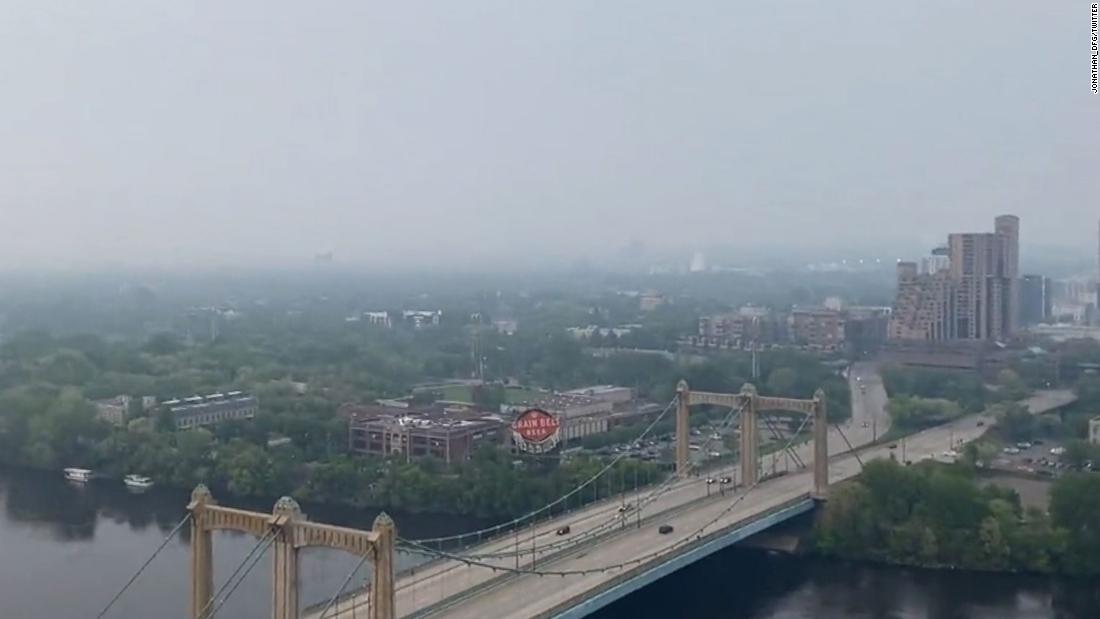- by foxnews
- 04 Apr 2025
How wildfires in Alberta lead to poor air quality in the Midwest

Residents of the central United States experienced poor air quality and smoke over the weekend. The potentially dangerous air has a far-off source: the wildfires raging in Canada.
The fires have ravaged western Canada, with more than 10,500 people evacuated from communities across Alberta.
The effects of the fires extend far beyond Canada, with poor air quality emerging in states as far away as Missouri and New York. Here's what you need to know about how the smoke may continue to affect parts of the US.
While all fires produce smoke, the bigger the fire, the more smoke it can produce. As this spring's Canadian wildfires burn bigger and hotter, the heat from the fire causes the smoke to travel farther up in the atmosphere, where it gets picked up by winds and weather patterns.
The higher in the atmosphere the smoke rises, the farther the smoke can spread. The winds in the upper levels of the atmosphere can spread smoke hundreds or even thousands of miles away, which can lead to hazy skies and poor air quality in cities far away from where the fires are occurring.
Wildfire smoke was measured to rise as high as 1 to 2 miles above the surface during the 2018 Camp Fire in California, according to NASA. As the smoke moves away from its heat source, the air will eventually cool and the smoke can sink, keeping it in the troposphere, the layer of the atmosphere closest to the surface of the Earth.
The troposphere is where the daily weather we typically experience occurs. High and low pressure systems can cause all sorts of weather from strong winds, to thunderstorms, hail and snow. The troposphere can extend 4 to 12 miles above the Earth's surface, according to the National Weather Service.
Several states, including Nebraska, Washington, Montana and Wisconsin, announced air quality alerts early Friday. The National Weather Service in Omaha tweeted the smoke would continue to create red-colored sunsets and sunrises. The service in Tacoma reported the smoke would be "pushed eastward in time for the weekend."
As of Sunday afternoon, the US Environmental Protection Agency's Air Quality Index reported "unhealthy" levels of air quality in parts of Montana and North and South Dakota.
On Sunday morning, the National Weather Service office in Grand Forks, North Dakota confirmed "high level smoke" would continue throughout the day.
Similarly, the weather service in Sioux Falls, South Dakota, reported "thick smoke well above the surface layer" would move into the area on Sunday. Poor air quality caused by the smoke would mostly affect those "that are particularly sensitive to particle pollution," they said.
Smoke from wildfires can affect the health of people living far from where the fires themselves ignited. A 2021 study conducted by epidemiologists from Colorado State University found long-term exposure to wildfire smoke leads to roughly 6,300 additional deaths each year, with the highest numbers found in the most populous states.
Wildfire smoke carries fine particulate matter, or PM 2.5, a tiny but dangerous pollutant, as CNN previously reported.
When inhaled, the particulate matter travels deep into lung tissue, where it can enter the bloodstream. PM 2.5, which comes from sources such as smoke, fossil fuel plants and cars is linked to a number of health complications including asthma, heart disease, chronic bronchitis and other respiratory illnesses.
CNN's Melissa Alonso, Michelle Watson, and Rachel Ramirez contributed to this report.
- by foxnews
- descember 09, 2016
'I traveled for an entire year for free - and saved $15K'
Hailey Learmonth explored Australia without paying rent, thanks to pet sitting. She saved $15,000, lived on farms, and embraced remote work to travel on a budget.
read more


